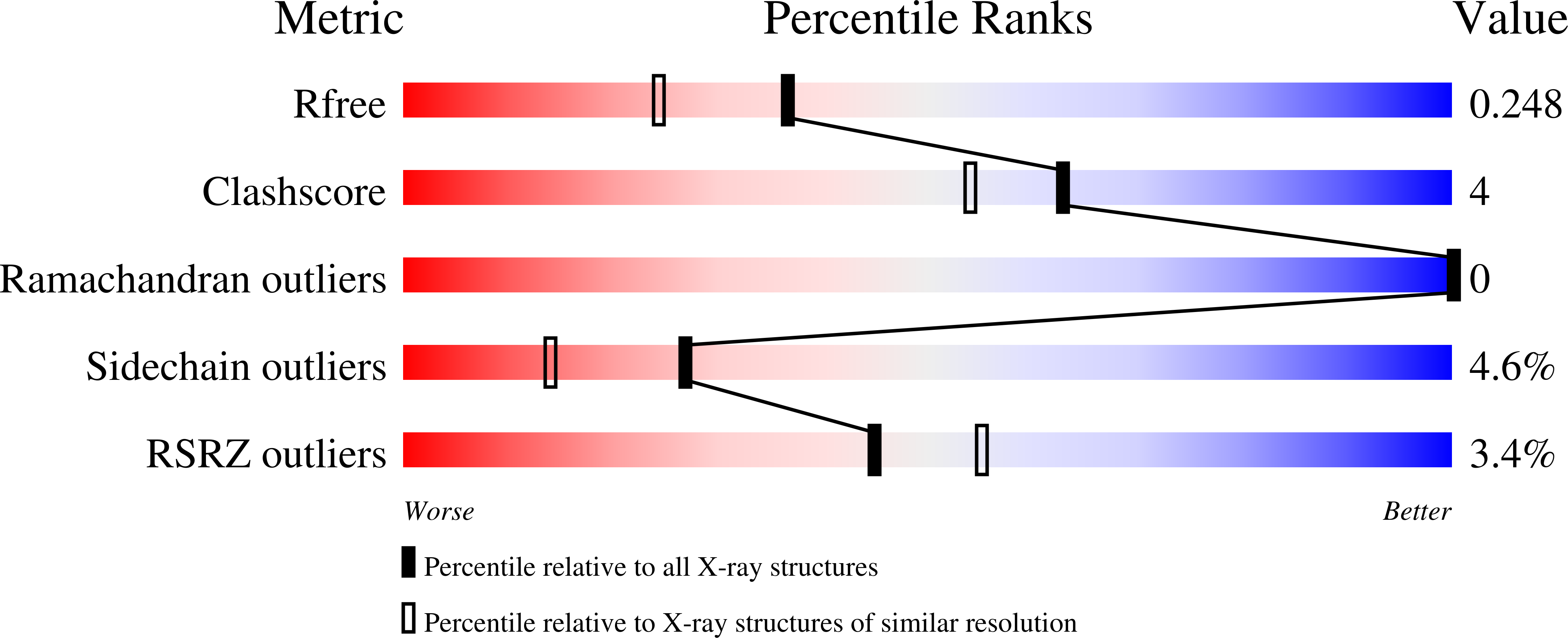Structural basis for glycosphingolipid transfer specificity.
Malinina, L., Malakhova, M.L., Teplov, A., Brown, R.E., Patel, D.J.(2004) Nature 430: 1048-1053
- PubMed: 15329726
- DOI: https://doi.org/10.1038/nature02856
- Primary Citation of Related Structures:
1SWX, 1SX6 - PubMed Abstract:
Lipid transfer proteins are important in membrane vesicle biogenesis and trafficking, signal transduction and immunological presentation processes. The conserved and ubiquitous mammalian glycolipid transfer proteins (GLTPs) serve as potential regulators of cell processes mediated by glycosphingolipids, ranging from differentiation and proliferation to invasive adhesion, neurodegeneration and apoptosis. Here we report crystal structures of apo-GLTP (1.65 A resolution) and lactosylceramide-bound (1.95 A) GLTP, in which the bound glycosphingolipid is sandwiched, after adaptive recognition, within a previously unknown two-layer all-alpha-helical topology. Glycosphingolipid binding specificity is achieved through recognition and anchoring of the sugar-amide headgroup to the GLTP recognition centre by hydrogen bond networks and hydrophobic contacts, and encapsulation of both lipid chains, in a precisely oriented manner within a 'moulded-to-fit' hydrophobic tunnel. A cleft-like conformational gating mechanism, involving two interhelical loops and one alpha-helix of GLTP, could enable the glycolipid chains to enter and leave the tunnel in the membrane-associated state. Mutation and functional analyses of residues in the glycolipid recognition centre and within the hydrophobic tunnel support a framework for understanding how GLTPs acquire and release glycosphingolipids during lipid intermembrane transfer and presentation processes.
Organizational Affiliation:
Structural Biology Program, Memorial Sloan-Kettering Cancer Center, New York, New York 10021, USA.



















